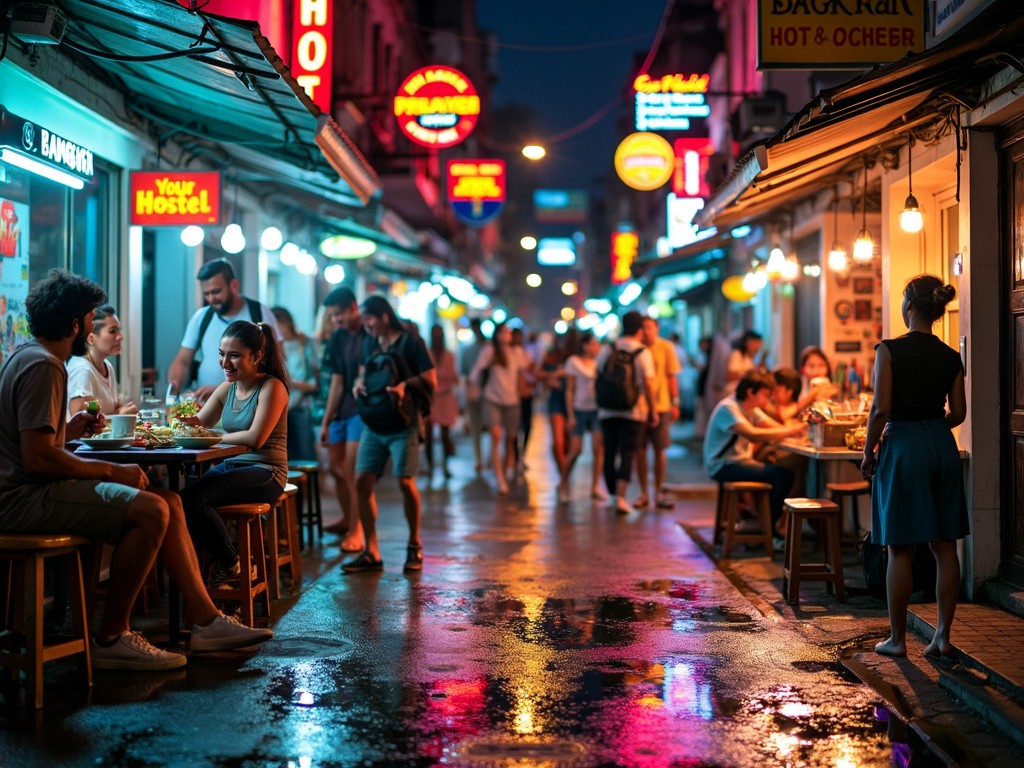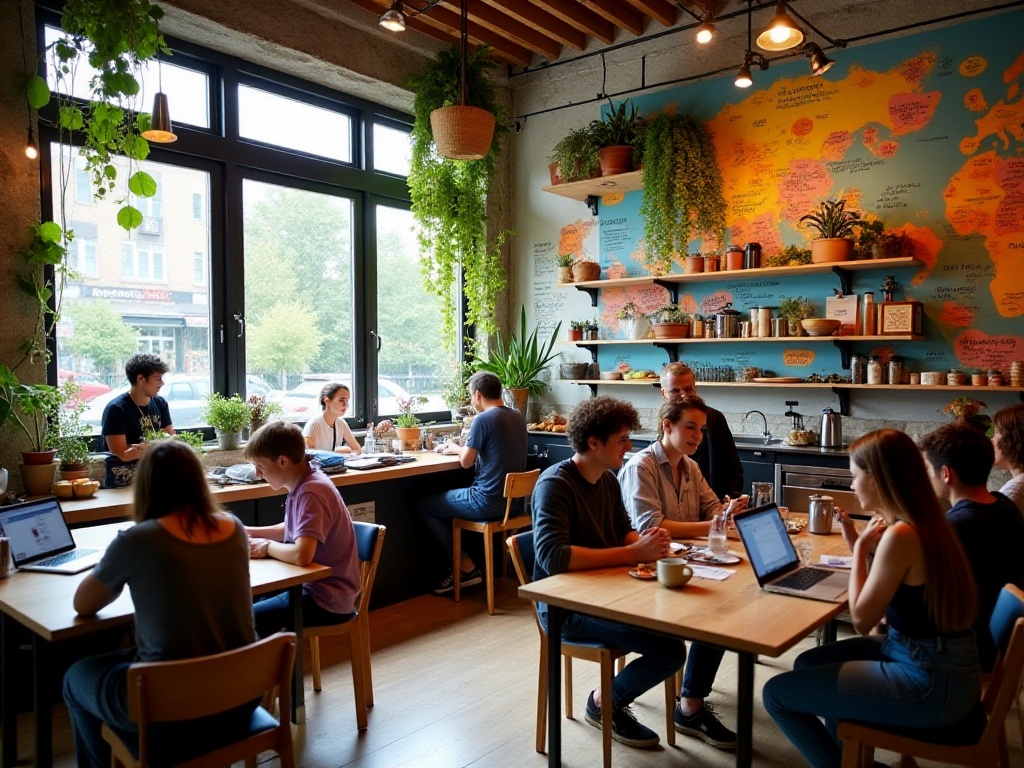
Origins
Have you ever wondered why homestays have become so popular in recent years? I remember my first homestay experience in a century-old house in Kyoto, Japan. The moment I pushed open that wooden lattice door, I was deeply moved by the indescribable peaceful atmosphere. This made me start thinking: what kind of changes have homestays brought to our travel experiences?
From initial farmhouse stays to today's boutique homestays, from simple accommodations to cultural experience spaces, the evolution of homestays reflects the transformation of the entire tourism industry. According to the China Tourism Research Institute, the number of homestays nationwide exceeded 200,000 in 2023, an increase of nearly 300% compared to 2018. Behind these numbers lies people's reconsideration of how they travel.
Transformation
When discussing the transformation of homestays, we must mention its three developmental stages.
The first stage was the "farmhouse stay" period in the 1990s. Accommodation conditions were relatively basic then, mainly farmers using their own homes to host tourists. Though facilities were simple, they allowed tourists to experience authentic rural life.
The second stage was the "family inn" period around 2010. As living standards improved, demands for accommodation quality also increased. Homestays during this period began focusing on improving hygiene conditions and basic facilities while maintaining relatively affordable prices.
The third stage is the "boutique homestay" period after 2015. Statistics show that the average daily rate of high-end homestays in China has now exceeded 1,000 yuan, with some popular homestays charging over 3,000 yuan during peak seasons. Homestays in this stage not only pursue excellence in hardware facilities but also emphasize cultural content and experiential value.
Core Appeal
What is the core appeal of homestays? I think it can be understood from the following aspects:
First is "differentiation." Unlike standardized hotels, each homestay has its own unique story and style. According to Ctrip's "2023 Homestay Industry Report," over 75% of tourists choose homestays primarily because they "want a different accommodation experience."
Second is "locality." Good homestays often integrate well with local environment and culture. For example, I stayed at a homestay in Dali, Yunnan last year where the owner not only renovated the old house using Bai ethnic architectural techniques but also filled the courtyard with local flora. Statistics show that over 60% of homestays incorporated local cultural elements in their design in 2023.
Third is "interactivity." Homestay hosts often have more interactions with guests, sharing local food, attractions, and culture. Data shows that over 80% of homestay guests believe interaction with hosts adds fun to their travel experience.
Revolution
The rise of homestays has brought profound changes to the tourism industry.
First is the impact on traditional accommodation businesses. According to the China Hotel Association, the occupancy rate of economy chain hotels nationwide decreased by 15% year-on-year in 2023, with a large portion of market share being taken by homestays.
Second is the promotion of rural revitalization. Many remote areas have revitalized idle resources and created employment opportunities through developing distinctive homestays. Data shows that rural homestays directly created over 1 million jobs nationwide in 2023, and indirectly drove employment of 3 million people in related industries.
Third is the promotion of cultural preservation. Many old buildings have been renovated and preserved to create distinctive homestays. In 2023 alone, over 5,000 historical buildings nationwide were given new life through conversion into homestays.
Pain Points
However, the development of homestays also faces some challenges.
Safety is the primary challenge. Statistics show that safety-related issues accounted for 35% of all homestay complaints nationwide in 2023. This includes inadequate fire safety facilities and substandard hygiene conditions.
Second is the problem of homogenization. With the influx of capital, many homestays have become identical. Surveys show that over 40% of homestay owners admit to referencing or imitating popular homestays in their design.
Third is the issue of service standardization. Compared to chain hotels, the service quality of homestays varies greatly. Data shows that the average customer satisfaction score for homestays in 2023 was 15 percentage points lower than that of starred hotels.
Future
Looking ahead, the homestay industry still has great potential for development.
First is the expansion of market size. China's homestay market is expected to exceed 300 billion yuan by 2025, maintaining an annual growth rate of over 25%.
Second is business model innovation. More homestays are exploring new models like "culture+" and "agriculture+". Statistics show that over 30% of homestays offered special activities like farming experiences and handicraft courses in 2023.
Third is standardization development. The government has begun formulating industry standards for homestays, with a complete homestay rating system expected to be established by 2025.
Recommendations
If you want a memorable homestay experience, I suggest you do the following:
First, choose the right location. Good homestays often complement their environment. From my experience, places with beautiful natural scenery or rich cultural atmosphere are more likely to have distinctive homestays.
Second, do your homework in advance. Besides looking at photos and reviews, I recommend paying attention to the host's introduction and philosophy. A dedicated homestay host can often bring you unexpected surprises.
Finally, maintain an open attitude. The beauty of homestays lies not only in the accommodation itself but also in those chance encounters and interactions with hosts and other guests.
What do you find most attractive about homestays? Feel free to share your homestay stories in the comments.
Next
Budget-Friendly Hostels in Southeast Asia: A Solo Traveler's Guide
Ah, Southeast Asia! The land of vibrant street markets, ancient temples, and pristine beaches. But for the solo traveler, it's so much more – it's a playground of self-discovery, cultural immersion, and unforgettable connections. And at the heart of this solo adventure? Hostels, my friends. These budget-friendly havens are the unsung heroes of the backpacker trail, offering not just a place to rest your head, but a launchpad for epic journeys.
From Hostels to Luxury Hotels: A Backpacker's Global Accommodation Guide
A comprehensive guide to accommodation options, covering traditional hotels, boutique hotels, B&Bs, self-catering units, as well as specialty lodging like mountain cabins, resorts, and alternative options including home exchange and work exchange programs
The Great Escape: Hotels Bask in Summer's Radiant Glow
In a world once silenced by the echoes of empty lobbies and vacant rooms, a new symphony of rolling luggage and excited chatter is rising. The hotel industry, long battered by the storm of a global pandemic, is finally seeing the sun peek through the clouds. As we stand on the precipice of a travel renaissance, local hotels are witnessing a surge in occupancy rates that's nothing short of miraculous.
Next

Budget-Friendly Hostels in Southeast Asia: A Solo Traveler's Guide
Ah, Southeast Asia! The land of vibrant street markets, ancient temples, and pristine beaches. But for the solo traveler, it's so much more – it's a playground of self-discovery, cultural immersion, and unforgettable connections. And at the heart of this solo adventure? Hostels, my friends. These budget-friendly havens are the unsung heroes of the backpacker trail, offering not just a place to rest your head, but a launchpad for epic journeys.

From Hostels to Luxury Hotels: A Backpacker's Global Accommodation Guide
A comprehensive guide to accommodation options, covering traditional hotels, boutique hotels, B&Bs, self-catering units, as well as specialty lodging like mountain cabins, resorts, and alternative options including home exchange and work exchange programs

The Great Escape: Hotels Bask in Summer's Radiant Glow
In a world once silenced by the echoes of empty lobbies and vacant rooms, a new symphony of rolling luggage and excited chatter is rising. The hotel industry, long battered by the storm of a global pandemic, is finally seeing the sun peek through the clouds. As we stand on the precipice of a travel renaissance, local hotels are witnessing a surge in occupancy rates that's nothing short of miraculous.


